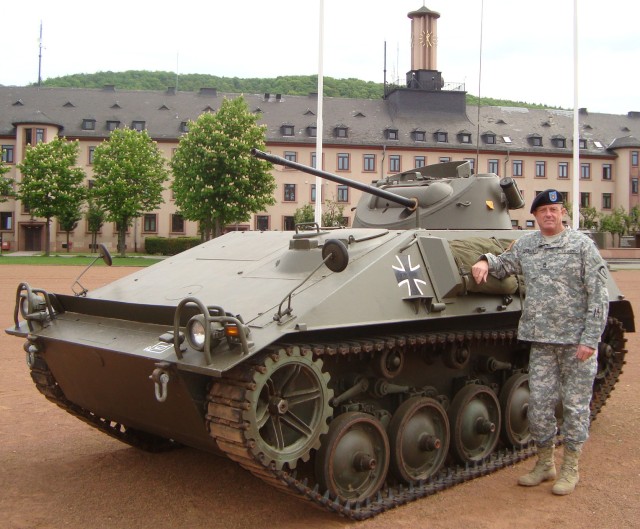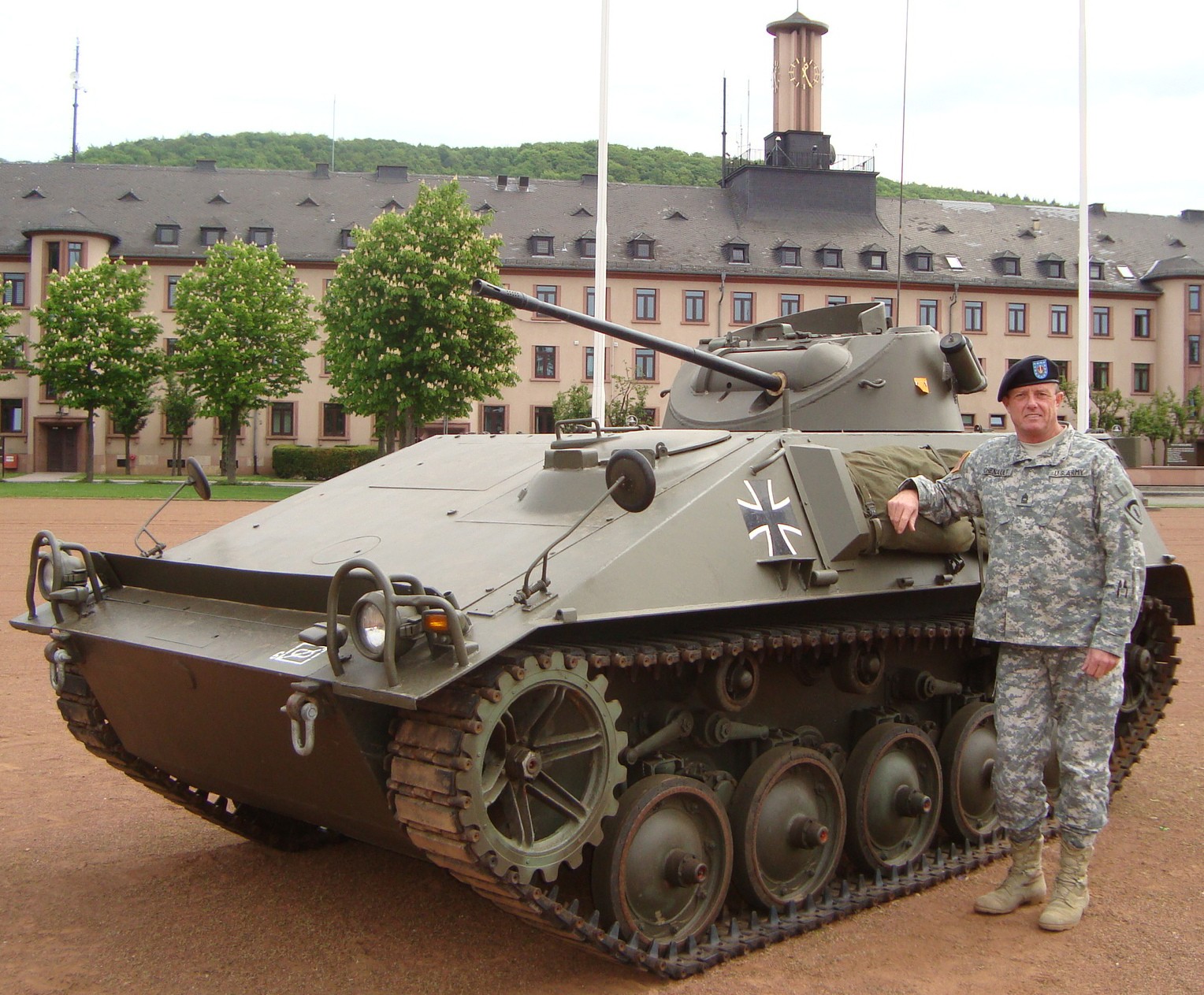HEIDELBERG, Germany - It was 1975. Shortly after the smoke cleared, the Vietnam War had ended. A Soldier stood tall, raised his right hand to defend his country, not knowing what exact future would be written.
Thirty-five years later, Master Sgt. Stephen Chenault, a native of Chillicothe, Ohio, still serves.
In his three and a half decades, Chenault has lived through changes that have transformed the military from uniforms and gear to current technology.
He started out as a heavy truck driver for the Marine Corps and then transitioned to the U.S. Army Corps of Engineers in 1979. He has since served in the Army National Guard, Army Reserves and active-duty Army. His career has allowed him to travel to 16 countries.
"A whole lot is different. Back then, especially in the Marine Corps ... You did not have the freedoms you have now," Chenault said. "There was no such thing as the PX, televisions at night, or so called free-time. The drill instructors had a lot more freedom to discipline new recruits, nothing like today."
When Chenault joined the Army, he wore the olive-green 107 type III poly-cotton blend, commonly called "Dura Press" from the mid 70s to 1989.
"I started in the military wearing the old OD green uniforms, where you could tuck the jacket inside of the jeans, iron on patches, and wear ball caps," he said.
The old greens are one of five variations of the Army combat uniforms Chenault has adorned. He also has worn the Battle Dress Uniform, Desert Combat Uniform, Army Combat Uniform "Universal" and Army Combat Uniform "Multi-Cam." Uniforms, however, were not the only thing Chenault watched change.
"There was a lot of change in the gear, just the same with the uniforms," he said.
He remembers going to the field and everyone had little shelter halves - "pup tents" - they slept in.
The M1 steel pot was replaced by two generations of Kevlar head protection products and then the current Modular Integrated Communications Helmet.
"When we changed to the new helmet, we lost a place to shave and bathe," said David Bethal, a long time friend and retired military buddy of Chenault.
The M-69 Fragmentation Protective Body Armor (nylon vest) was replaced by three variations of Kevlar products, to the now-used Improved Outer Tactical Vest with Enhanced Small Arms Protective Insert plates.
"I still have some of my old gear from the mid 70s, the M1steel pots, like they had in the Vietnam days, and the web belt. And to think this is all they wore, no Interceptor Body Armor and things that they have today," Chenault said.
As the Army transformed, computers made a big impact.
"Anything ... typed and sent to multiple offices was typed with carbon paper between the copies," Bethal said.
Chenault's reflections were of a career still going on, "In fact I retired back in 2002," he said.
Since then he joined the 18th Engineer Individual Mobilization Augmentee in Europe and activated for a tour in Afghanistan in 2005 with the 18th Engineer Brigade.
"I thought after my first tour in the Army, as a kid, I would never do 20 years of service, but when you love what you do, enjoy working with your colleagues and seeing all the differences that can be made, the Army has a lot to offer," he said.
Chenault has traveled frequently to places like Israel, the Republic of Georgia and Romania. In his job now, he oversees exercise-related construction for the deputy chief of staff of engineers. He has served under seven presidents and his legacy continues with his family.
"I have a son who just re-deployed from Iraq with the National Guard," Chenault said proudly.


Social Sharing